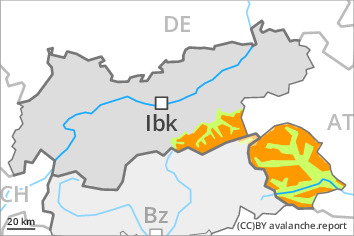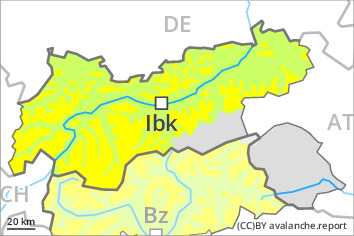
Danger level
 | treeline |
|  |
|  | ||||
|  |
|  |

Wind slabs and weakly bonded old snow represent the main danger, caution is to be exercised in particular in the regions exposed to heavier precipitation above the tree line.
Weak layers in the old snowpack can be released in some places by individual winter sport participants. The avalanche prone locations are to be found in particular on steep west, north and east facing slopes above the tree line, in the regions exposed to heavier precipitation especially.
The fresh wind slabs can be released by a single winter sport participant in some cases in all aspects. Caution is to be exercised in gullies and bowls, and behind abrupt changes in the terrain, as well as adjacent to ridgelines above the tree line. At elevated altitudes the likelihood of avalanches being released is greater.
Especially on wind-loaded slopes medium-sized avalanches are possible.
Meticulous route selection is required.
Snowpack
dp.1: deep persistent weak layer
dp.6: cold, loose snow and wind
Over a wide area 10 to 20 cm of snow, and even more in some localities, has fallen since Thursday.
Avalanche prone weak layers exist in the old snowpack, especially on steep shady slopes above the tree line, as well as on steep sunny slopes in high Alpine regions. As a consequence of new snow and a moderate to strong wind from variable directions, further wind slabs formed especially adjacent to ridgelines and in gullies and bowls.
The fresh wind slabs are lying on soft layers in particular on shady slopes. The older wind slabs are lying on surface hoar in some places.
Only a small amount of snow is lying for the time of year.
Tendency
The avalanche danger will persist. Wind slabs and weakly bonded old snow represent the main danger.



